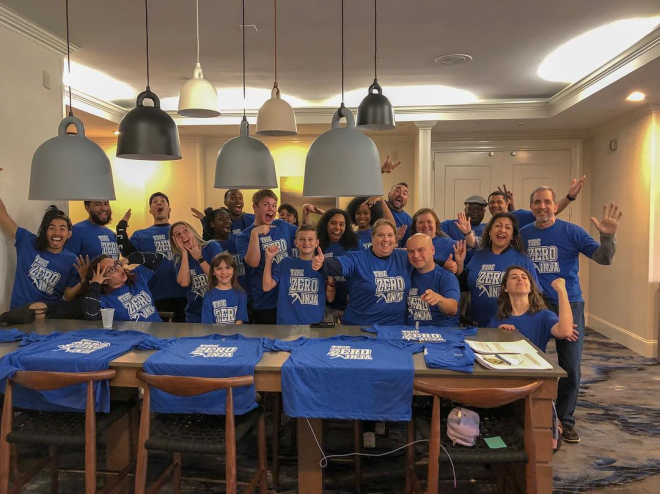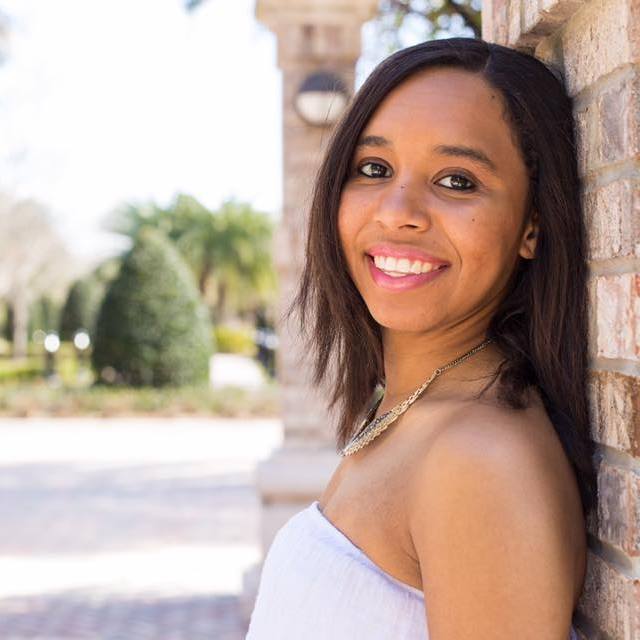From Dance to ‘American Ninja Warrior’: Christina Martin Talks to BT1
Christina Martin has had type 1 diabetes since she was 13 years old. In high school, she started her own foundation—Type Zero—to help others know they were not alone. This year, Christina attended the JDRF Children’s Congress and participated in Season 11 of American Ninja Warrior.
BT1: Can you talk about your diagnosis?
Christina: When I was diagnosed, I was in my teen years and I felt like nobody understood what I was going through. And I feel like teenagers already have that mindset that people don’t understand and for me it was even more literal because my family literally did not get what diabetes was like for me. I wasn’t that open in sharing what the experience was like for me and I wanted to be seen as someone who is strong, not weak. So I definitely had a lot of fears and didn’t really share that with anybody.
At the time I was diagnosed, I did not know anybody else with type 1 and neither did my family, so I felt very alone. And I actually remember when I was in the hospital, I begged them to let me stay another day because I was so scared to go home and manage this disease on my own… But I have been dancing since I was 8 years old and that actually really helped with my diagnosis. I was already very involved in dance classes and so dance became kind of an outlet to deal with the stress that I felt with diabetes, and also just to be able to tell stories and express how I was feeling.
What is Type Zero?
We started it as a club, so it was on a much smaller scale. The kids would meet every week at the high school that I went to and because I love to dance, we thought, why don’t we teach them how to dance? It’s something fun. And then at the end of every session, we would teach them about diabetes. We realized that we were creating a community within the school, and it was also the first time that I met other type 1s. So it was really cool to have created that myself and to have not have known that this is what was going to be the result of it.
Now, we have monthly outings and we base it off of what the community tells us they’d like to do, what our families want to do. We put it together and we invite everyone to get together and it’s just a way to create that everyday support. The people know that they have someone to lean on at any point in time.
Our ultimate goal is to be able to take what we’ve created in Central Florida and to be able to provide that everyday support system throughout the whole country. We put together dance performances and we go out and we perform them, and every dance that we do is inspired by diabetes. It tells a story about either struggle or about hope or about success. We use dance as a way to bring more awareness to our community. Then the other part is the mentorship program: we want to be able to provide kids that have just been diagnosed with somebody who has had diabetes longer and feels confident in their management. That way when these kids are in the hospital, they are not doing what I did, they’re not begging to stay at the hospital. So just being able to take these programs and expand on them throughout the country, so that more families will feel supported, that’s really the goal.
What was your experience like at JDRF Children’s Congress?
For Children’s Congress, I was chosen to be a type 1 diabetes( T1D) role model. I flew to DC with the other role models and we had a session. All of the kids that were flown in were representing every state and they were able to ask us questions about how we live with diabetes. And all the questions were different and detailed. But what I came to realize at the end of the session was that every child was really asking us how we are able to be strong with diabetes. It was very humbling for me to be able to be there and be able to share that with these kids. We also got to talk to the congressman and encourage them to renew funding for diabetes research in our country.
How did you come to audition for American Ninja Warrior?
So I remember sitting on the couch when I was a little kid with my family and we would watch “American Ninja Warrior.” And I remember thinking that that was so cool, but it was totally out of reach. It was not something that I would ever do.
 But I started to train and it was the first time that I ever considered the possibility of doing the show. And the idea was that if I were to be accepted onto the show, I would be doing it to bring awareness to diabetes in a way that was so different than how I’d ever done it before. Once I was accepted onto the show, we did everything we could with Type Zero to make sure that people understood we need to focus more on diabetes research; we need to do more to learn and more to support each other in the community. I was the first female with type 1 diabetes to be on the show.
But I started to train and it was the first time that I ever considered the possibility of doing the show. And the idea was that if I were to be accepted onto the show, I would be doing it to bring awareness to diabetes in a way that was so different than how I’d ever done it before. Once I was accepted onto the show, we did everything we could with Type Zero to make sure that people understood we need to focus more on diabetes research; we need to do more to learn and more to support each other in the community. I was the first female with type 1 diabetes to be on the show.
The most amazing part was not actually competing. It was the moment right before when the producers had told me that they were going to count me down. I was going to go out on the platform and I would have a minute to kind of wave to the crowd, show them that I was excited, and that I was ready to run the course.
So they counted me down and I went up on the platform and it was an amazing moment because I had the privilege of having 28 people who drove from Florida. They drove eight hours to get to Atlanta for this taping and they were all in the audience there to support me. So I decided that I wanted to point to my insulin pump because I decided to wear it on the show. I was wearing my pump and I had my sensor on, and it was that moment when I started to point to it that it was just really special because that is when it finally hit me that I was doing something that I had only dreamed of doing when I was little, and something that I had been ashamed to do when I was first diagnosed with diabetes.
What’s next for you?
I plan to apply again for “American Ninja Warrior” and this time, I plan to be the strongest that I can be for me. I have the opportunity now to also be a motivational speaker, which is really awesome. And with Type Zero, our dream is to be able to open up a building that feels like another home to our community. It will be a place where we can have our outings, meetings, fitness classes, food classes, everything related to health. People can go there and just feel like they are a part of something.
Check out Christina’s entry video for “American Ninja Warrior”:




